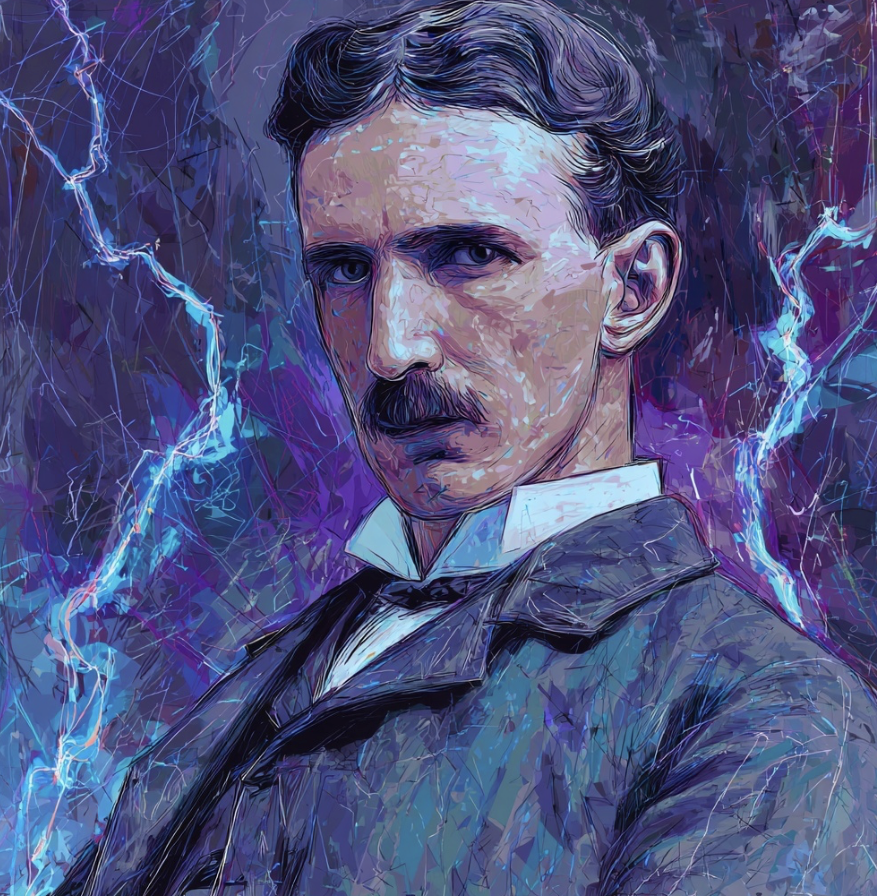Nikola Tesla’s Wild Inventions: From Niagara Falls Power to Radio to a Death Ray
When you stand at Niagara Falls, you’re not just looking at one of the world’s great natural wonders — you’re standing at the birthplace of modern electricity. And at the heart of that story is one of history’s most brilliant and eccentric inventors: Nikola Tesla.
Powering the World with Niagara
In the 1890s, Tesla’s alternating current (AC) system was chosen to harness the power of the Falls. In 1895, the first hydroelectric power station opened here, sending electricity from Niagara Falls to Buffalo — more than 20 miles away. It was the first time electricity had been transmitted such a distance, and it changed everything. Niagara became the birthplace of the modern power grid, and Tesla’s vision lit the world.
Did Tesla Really Invent Radio?
Most people credit Guglielmo Marconi with inventing the radio. But here’s the twist: Marconi’s radio relied heavily on Tesla’s earlier patents. In 1943 — the year Tesla died — the U.S. Supreme Court recognized Tesla’s work as foundational to radio. So while Marconi won the fame and the Nobel Prize, Tesla’s fingerprints were there from the beginning.
The Tesla Coil: Lightning in a Bottle
Tesla also invented the Tesla coil, a machine that could shoot lightning-like arcs of electricity into the air. It wasn’t just for spectacle — he used it to experiment with wireless transmission of energy.
People often ask: was it safe? The answer is complicated. Smaller coils used in demonstrations carry very high voltagebut very low current. ⚡ Voltage is the push that drives electricity, but current is the flow — and it’s the current that makes electricity truly dangerous. That’s why museum demonstrations can be safe, but Tesla’s larger coils, if mishandled, could be lethal.
Tesla’s “Death Ray” and the Wall of Force
On his 78th birthday in 1934, Tesla made headlines with one of his boldest claims: a weapon he called “teleforce” — quickly dubbed the “death ray.”
Tesla described it as a kind of “wall of force,” an invisible screen of terrifically concentrated energy through which nothing could pass. He insisted it could annihilate airplanes, armies, or fleets, and that it would serve as the ultimate defensive weapon — powerful enough to make war impossible if every nation had one.
No prototype was ever found, and most historians believe it was more of an untested idea than a practical invention. Still, it captures the way Tesla thought — always imagining decades ahead of his time.
Wardenclyffe Tower and the Dream of Free Energy
One of Tesla’s boldest dreams was to send electricity through the air, wirelessly, across the entire planet. His famous Wardenclyffe Tower on Long Island was designed to transmit power without wires, so anyone could tap into it — no poles, no grids, no monthly bills. Some historians see it as a brilliant but premature idea, while others speculate it was exactly why Tesla’s backers pulled out. Free, unlimited power would have disrupted the business empires built on selling electricity, and the project collapsed before it was finished. Whether it was financial caution or corporate pressure, Wardenclyffe became a symbol of how Tesla’s biggest ideas sometimes threatened the very systems that could have supported them.
A Legacy Larger Than Life
Tesla died in 1943 in New York, alone and nearly forgotten. Yet his inventions — from AC power to the induction motor, from radio to wireless energy experiments — continue to shape the modern world.
So when you visit Niagara Falls, remember: the thundering water here didn’t just carve a gorge. It also powered Tesla’s imagination and launched a revolution in electricity that still lights our homes today.
#NikolaTesla #WildInventions #NiagaraFalls #ScienceHistory #TeslaCoil #DeathRay #Inventions #GoNiagaraTours #Electricity #Radio #Hydropower



